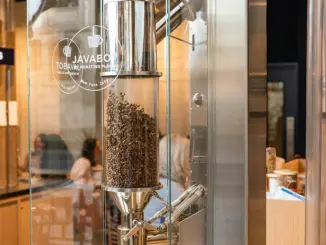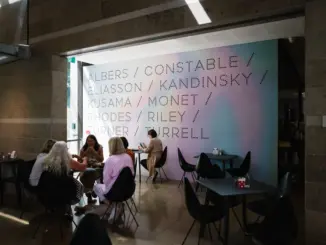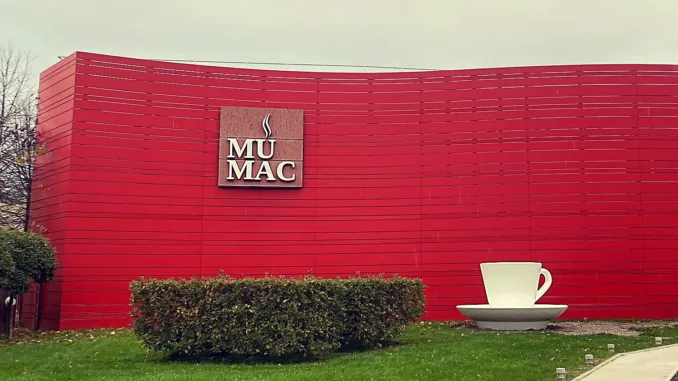
We continue our visit of the seven rooms at MUMAC to learn more about the fascinating history of espresso machines.
BY TANYA NANETTI
SENIOR ONLINE CORRESPONDENT
Featured photo by Tanya Nanetti
Yesterday, we visited the first three rooms of MUMAC, where early espresso machine designs delighted with their vintage looks and antique technology. Today, we’re venturing further into the 20th century and beyond with the remainder of MUMAC’s collection.
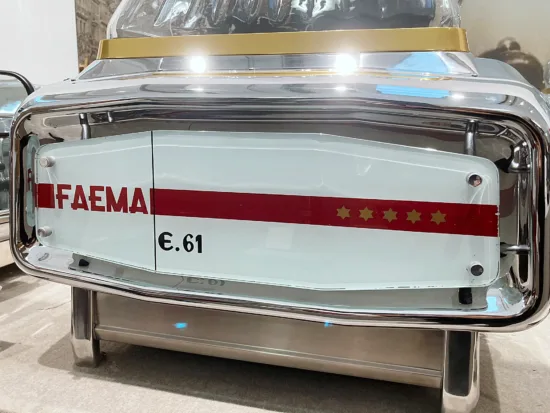
Room Four: Embracing Art & Design
The fourth room showed the new aesthetic of espresso machines in the 1960s and 1970s, totally turned toward the world of design. Everything was more colorful but also more functional, and produced in innovative materials such as plexiglass, reminiscent of the pop-art of the time.
La Cimbali produced the Pitagora, consisting of only 17 pieces and available in a range of colors. This machine was so unique that it won the Premio Compasso d’Oro (the only espresso machine ever to win the coveted design award). At the same time, Faema (once a competitor of La Cimbali) began production of the E61 (named after the solar eclipse that occurred that year in Italy), the first machine equipped with a volumetric electro-pump. It became a cornerstone in the history of espresso machines and is still in high demand 60 years later.
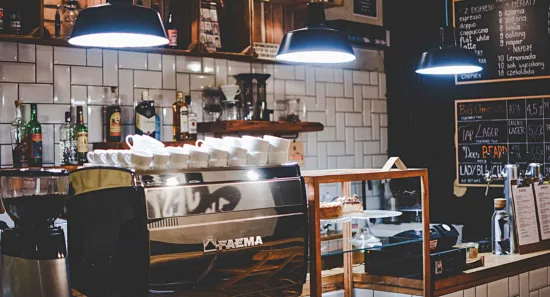
Room Five: Electronic Revolution
The fifth room covered the electronic revolution of the 1980s and 1990s, with new, less ornate but more advanced machines. One example was the Faema Tronic (1983), equipped with a push-button panel that allowed the barista to adjust the amount of coffee dispensed.
In the same decades, fully automatic espresso machines also began to appear on the market, intended mainly for the more remote corners of the world that were starting to discover a “new“ love for the Italian way of making espresso.
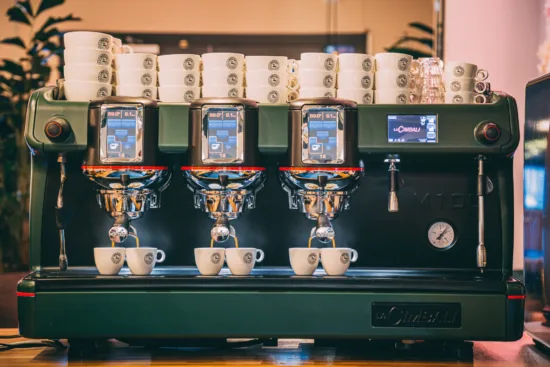
Room Six: The 21st Century
The sixth room showed everything happening in the world of espresso machines in the new millennium. The technology has been upgraded with bluetooth and technological displays. We also have the beginning of third-wave coffee culture and the first communities of coffee enthusiasts.
On display here was the La Cimbali M100, created in 2012 to celebrate not only the company’s centenary, but also the opening of MUMAC. The machine was built looking to the past, but with the most advanced technologies available, to celebrate the brand’s history with one foot already in the future.
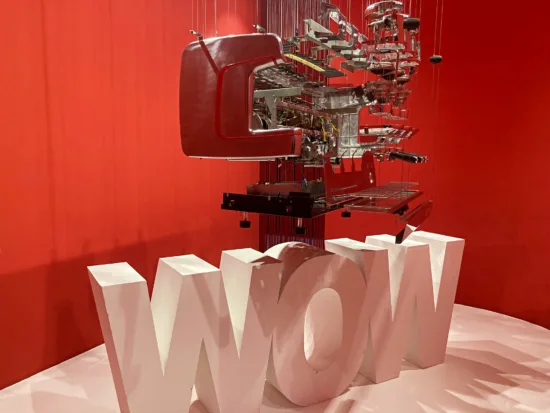
Room Seven: The Lab at MUMAC
The last room, which closes the visit, is called The Lab and consists of several thematic islands that show and compare different products from La Cimbali and Faema. There is the E61, the classic Pitagora versus a super-automatic, the Faemina home edition (the first Faema developed for the home market in 2022) versus the fully manual 1950s Baby Faema, and much more.
Last but not least sas the exploded view of the La Cimbali M100. This stunning display of some of the components of the M100, while only showing 30% of the total parts, revealed the complexity behind what might superficially seem like “a simple cup of coffee.“
We concluded our visit with a brief look at the beautiful halls of the MUMAC Academy, where regular coffee classes and SCA Coffee Skills Programs are held. As we leave, we’re glad for the many things we learned, and for having had the opportunity to visit such an impressive collection of espresso machines.
ABOUT THE AUTHOR
Tanya Nanetti (she/her) is a specialty-coffee barista, a traveler, and a dreamer. When she’s not behind the coffee machine (or visiting some hidden corner of the world), she’s busy writing for Coffee Insurrection, a website about specialty coffee that she’s creating along with her boyfriend.
Subscribe and More!
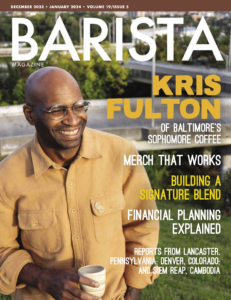
Out now: It’s the December 2023 + January 2024 issue! Read it for free with our digital edition. And for more than three years’ worth of issues, visit our digital edition archives here.
You can order a hard copy of the magazine through our online store here, or start a subscription for one year or two.



